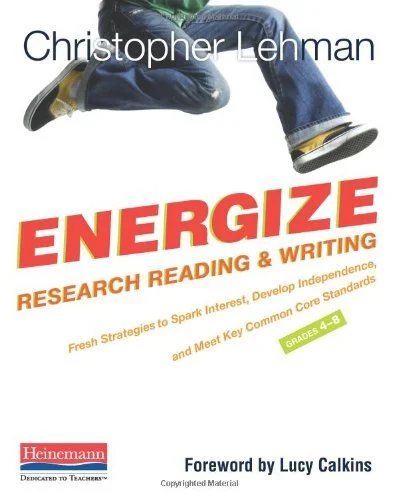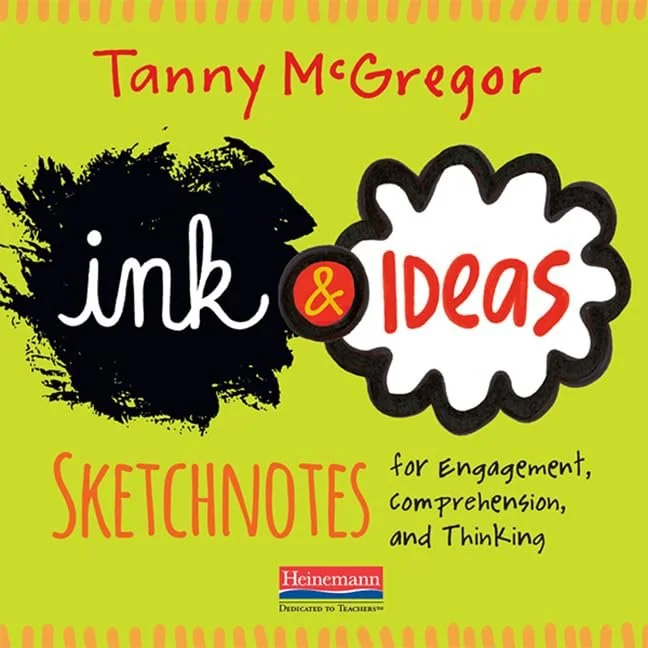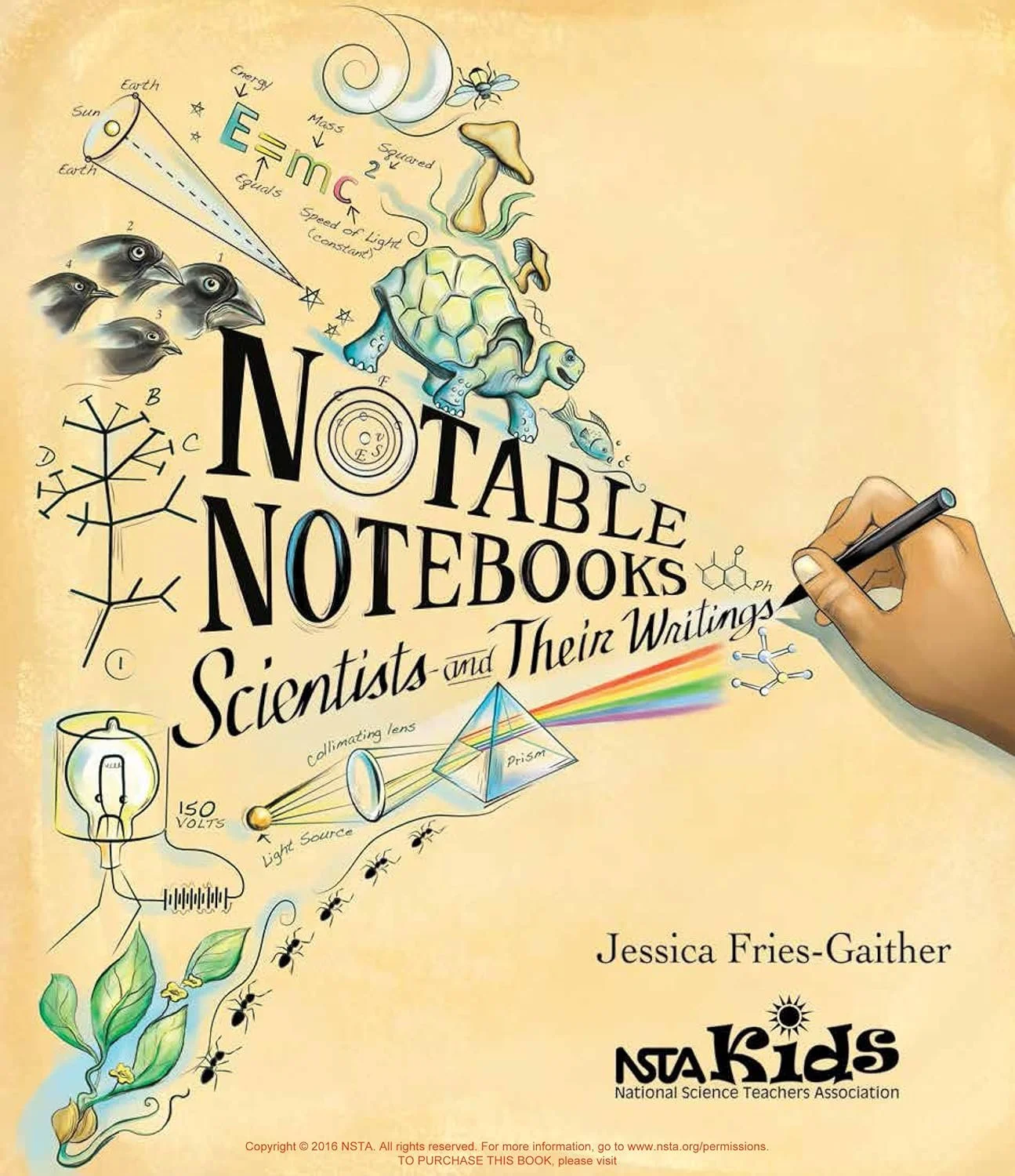Sketchnotes for Research
Energize Research Reading and Writing: Fresh Strategies to Spark Interest, Develop Independence, and Meet Key Common Core Standard by Lucy Calkins and Christopher Lehman
It is that time of year when many of us move away from narrative to begin our nonfiction reading and informational writing. Along with these new units comes the challenge of research.
I cannot think about research with young writers without recalling Chapter One of Lucy Calkins and Christopher Lehman ’s Energize Research Reading and Writing. After describing researchers in the world, he writes:
“Shift your thoughts to school, to rows of students doing ‘research projects.’ I’ll give you a moment to recover.”
He encourages us to look beyond the creative presentations of these projects - mobiles, posters, drawings, reports, Google slides - to see that the text is “at worst, text lifted directly from sources or, at best, lists of dry facts in the general shape of paragraphs - both of which, let’s be honest, are an incredible bore to read.”
He goes on to note that if you talk to the creator/author of these projects to ask her to teach you what she learned, often you’ll hear generalities about the topic, with a lack of the depth of knowledge the time spent working on that project should have delivered. In his words, “Research becomes a task to complete, not a means of deep committed learning, not a drive to inform others.”
So true. Years ago, I visited a sixth grade class that had been working on their research projects for weeks. They were at the point of just putting their finishing touches on their research prior to publication. I conferred with one writer who had researched the rainforest. She had her tall stack of index cards where she had copied a pile of facts from her reading. I asked her to teach me about the rainforest. She immediately reached for her stack of cards to begin reading to me. I told her “No. Just teach me what you learned about the rainforest.” It went something like this:
Student: It gets a lot of rain? (Yes - she used that question voice. Long pause.)
Me: OK. Anything else?
Student: It has layers?
Me: (wait time)
Student: (nothing)
Me: Can you teach me about those layers?
Student: Reaches for the cards.
After weeks of researching, she really learned very little. Ralph Fletcher says: When you are ready to teach, you are ready to write. Clearly, this writer was not ready… Neither were her classmates.
We want our students to become researchers in the true sense of the word - “not graphic organizer filler-in-ers, not text copiers, but independently thinking, curious, and rigorous researchers.”
OK, but HOW? What do we do instead of Google Slides or packets? One thing to try are sketchnotes - an engaging way to capture learning from reading or videos. (See: Tanny McGregor’s Ink & Ideas: Sketchnotes for Engagement, Comprehension and Thinking.
Sketch notes are a visual note-taking method that does not require any artistic skills. Nor are there rules about how the notes should look. This method can:
Aid retention of information and transfer it from short-term to long-term memory.
Help students understand concepts more deeply,
See patterns among and connections between disparate facts
Improve organizational skills
Develop critical thinking
Keep students engaged and focused
Make content more accessible
Welcome both linguistic and nonlinguistic representation of content
Because students are creating their notes, they are actively thinking about what they are learning instead of just mindlessly copying. You can use this method during read aloud or while watching an informational video. Eventually students may use this method on their own as they are researching.
Launching Sketchnotes:
A blank page can create what Tanny McGregor calls “page fright.” You might want to begin by sharing the notebooks that scientists keep. They are full of sketches and ideas (See: Notable Notebooks: Scientists and Their Writings by Jessica Fries-Gaither)
Share some examples of sketchnotes made by other students. (Tanny shares many examples in her book. You can find many more on X (Twitter) #readsketchthink) Students need to get an image of options for their notes.
Let go of perfection - Sketchnotes are visual thinking. They are meaningful…not perfect, not artwork. They are nothing to be afraid of. Do a few examples of your own notes by creating them in front of the children. One way to do this is watch an informational short video together with the sound off at first (Free School has some good ones). You sketch on the doc cam, thinking aloud as you sketch. Then replay the video with sound on and add more information to your sketch.
Distribute materials: 11x17” paper, colored pencils, markers. You may even want to try with a few sketchmats provided in Tanny’s book (or create your own to align with your grade level). Think about frames, bullets, arrows, bubbles, etc.
Try it with a short informational text (a chapter or part of an article) that is packed with information, facts, measurements, and descriptions. It is best if the topic is unfamiliar to most of your students. This will be an exercise in determining importance as not everything can, or should, be captured.
Pause every once in a while to allow students time to sketch what they just learned. Remember: You are sketching LIVE along with the students. Cycle through read, think, sketch, repeat. Constantly ask: What is the most important? What do I find interesting?
Make sure to capture the expert words of the topic along with any new-to-you Tier 2 words. Perhaps create a frame just to collect these words.
Have students share their notes in partnerships. Add what your partner captured that you did not. OR Discuss why you chose to leave that part out
Reflect: How did sketchnoting help you learn? When might you try it again? Can you think of a time sketchnoting might help in science? Math? Social Studies?
Remember: Sketchnotes are just ONE way to avoid mere copying when researching. Some children fall in love with it, but it is never going to be something that will work for everyone all the time. You are just adding to a student’s repertoire of possibilities for their thinking and learning.






